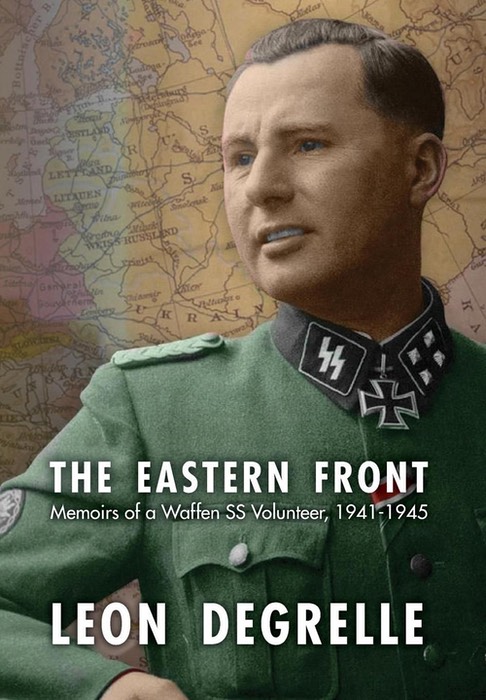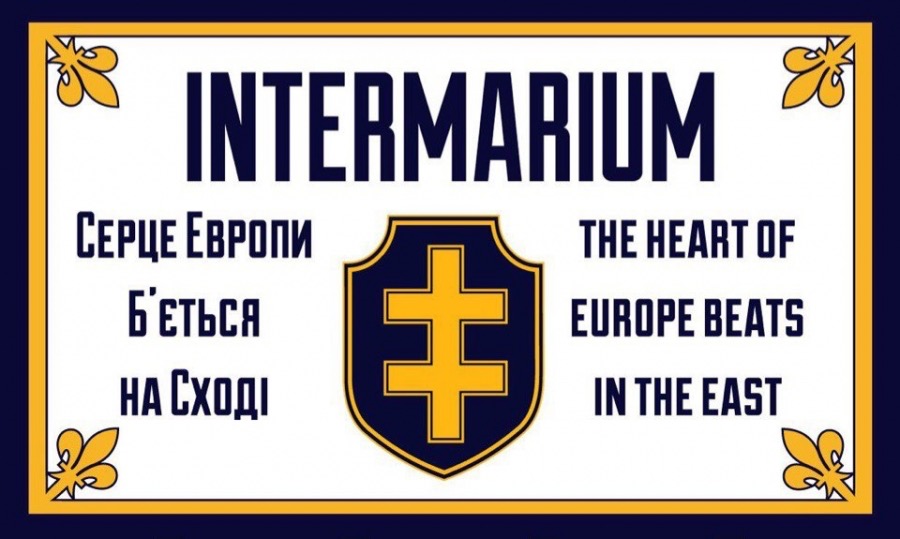'THIRD WAY' POLITICS
The whole thrust of Semenyaka's activity in the field, organising and speaking at conferences of people from the Intermarium countries, is aimed at the anti-liberal right, and her own contributions to these conferences are often quite academic elaborations of what she calls the 'third way' in politics.
Semenyaka outlines what she means by the third way in an article posted on the website of the Ukrainian Traditionalist Club in May, 2017. She begins by talking about the French 'new right', associated with the names Alain de Benoist and Guillaume Faye, for whom she retains a lively admiration, despite the fact that their sympathies lie (or lay - Faye died in 2019) with Vladimir Putin and Russia:
'Faye's concept of Archeofuturism is a significant contribution to the 'general humanities' of postmodernity, and de Benoist's excursions into European political history or Indo-European mythology are impressive. This is at least an intellectual level that most of those who criticise these thinkers for their pro-Kremlin orientation do not reach, which, however, does not negate the validity and urgency of criticising this unhealthy alliance with post-Communist élites.' (37)
(37) Olena Semenyaka: "The Third Way" and Pan-Europe: What is the New Right and the New Right? Entry posted on the website of the Ukrainian Traditionalist Club on May 16th, 2017 - https://web.archive.org/web/20190701091254/http://uktk.org/third-way-paneuropa/ Unpaginated. Faye's 'Archeofuturism' aims to reconcile traditional values with advanced technology, in opposition to the anti-technological traditionalism associated with Guénon. Though Faye's 'traditional values' tend to be quite pagan and libertarian.
She goes on to say that;
'the defining thesis of the New Right, which is about the need to unite European nations in the face of the threat of globalization of one kind or another, and "never again" with regard to fratricidal wars, which is sometimes seen as the source of the pro-Putin "Konintern," was actually formed during the First World War. The deeper roots of the new right-wing idea of a united Europe and, in the language of geopolitics, "autarky of large spaces" (Friedrich List's concept, revived in twentieth-century German politics by the conservative revolutionary, lawyer, and political philosopher Carl Schmitt) should be sought in the tradition of Romano-Germanic universalism and the supranational institution of chivalry, which was forged in the battles for European cultural identity …
'The classics of the conservative revolution and, at the same time, the new right that grew out of it - Ernst Jünger, Julius Evola, Oswald Mosley, Pierre Drieu La Rochelle - think this way. They were the first theorists of a united Europe of Nations in the postwar period, when the need for their early work on this topic increased dramatically. The developments of German conservative revolutionaries, including the most radical national revolutionary wing, not to mention the young conservatives of the Herrenkreis, in turn were based on the symbols of the Holy Roman Empire of the German nation and the already effective statecraft traditions of the Second Reich - the Prussian "gathering" of German lands within the framework of the Little German approach, supplemented by the Great German geopolitical projects of the First World War, which already then envisaged the unification of Western and Eastern Europe under a German protectorate.'
She then elaborates in some detail on the cases of Jünger, Drieu La Rochelle (leading French supporter of collaboration with Germany during the occupation), Mosley and Evola with a particularly interesting account of 'the Waffen SS and Léon Degrelle's "separate reality"'.
Léon Degrelle was the founder of the Belgian Catholic-Fascist movement 'Rex'. The 'reality' that separates him from the the others Semenyaka discusses is his continued affection for Hitler, and his conviction that the third phase of the development of the Waffen SS, when it was opened to all the different peoples of Europe, including the Muslims of Bosnia, was genuinely intended as the force that would establish the conditions for a pan-European civilisation from Lisbon to Vladivostock. She does say that 'other members of the SS movement have argued that Degrelle's idyllic picture was exaggerated in every respect' but she nonetheless quotes him at length and if she's sceptical about the reality she obviously finds the ideal quite thrilling.

Degrelle died in 1994. I was living in the South of France at the time, in the Alpes de Haute Provence. I remember one time seeing at a distance of perhaps thirty or more miles a cliff face with the words emblazoned in huge, white, clearly readable letters: 'Degrelle - Immortel.'
Semenyaka finishes by explaining what she is trying to do in invoking these names. She quotes the Italian right wing theorist Adriano Romualdi (who died at the age of 33 in a somewhat suspicious car crash):
'"...while the man of the left has also elements of the culture of the left and reads Marx, Freud and Salvemini, the adherent of the right hardly possesses the cultural consciousness in the spirit of the right. He is unaware of the importance of Nietzsche in the critique of civilization, has never read any novel by Jünger or Drieu La Rochelle, is not familiar with Spengler's The Decline of Europe and has no doubt at all that the French Revolution constituted a remarkable page in the history of human progress. While he is in the realm of culture, he is a nice liberal and only maybe a little nationalist and patriotic … It doesn't take too much to make it clear that the right has no culture because there is no genuine right-wing ideology, an aristocratic and anti-democratic worldview that values quality and a coherent worldview over certain interests, nostalgia and any oleography." (38)
(38) Oleography, also known as chromolithography, was a means of reproducing the appearance of oil paintings using lithography. Romualdi is using it to indicate a fake antiquity. I've seen some beautiful reproductions in chromolithography of old Egyptian or South American art which leaves me regretting that the technique has been abandoned
So, for Semenyaka, the new right, despite its sympathies with the Kremlin, is 'the resuscitation of European great-power traditions under the sign of Twentieth Century geopolitics and attempts to embody conservative and revolutionary visions of a united Europe'. She goes on to quote Nietzsche evoking figures 'who were able to productively transcend their own national determinants. From these and only these positions Nietzsche ridiculed "atavistic" nationalism with its attachment to the native land.' In looking at Europe as a whole he distinguished between 'old' peoples (notably the French) and young peoples (the "central European type"), seeing, I might add, virtues in both of them. In our own time, Semenyaka suggests, the Western European right is interested in the Intermarium project because 'they perceive the Eastern European peoples (a view professed by Nietzsche, the "descendant of Polish aristocrats") as "young" and the Intermarium as a kind of laboratory for the revival of Old Europe, a chance for Spengler's Abendland (39) to dawn again.'
(39) 'Abendland' - evening land, the place where the sun sets, is German for 'the West'.
I would like to have been able to finish with commenting on how Semenyaka is coping with the situation that has developed since the Russian intervention, the loss of so much of Ukraine's Black Sea coast and the obvious dependence on support from the despised countries of the West but I haven't yet been able to lay hands on any relevant material. It may be, though, that from her point of view it doesn't matter very much. The main thing in her eyes is the promotion throughout Europe of the ideology of the 'third way,' and a demoralised rump Ukrainian state in a permanent state of military tension with a great empire that (assuming Dugin gets nowhere) has no clearly defined idea of its own, will be ripe for takeover, hence becoming a useful base from which to operate.
